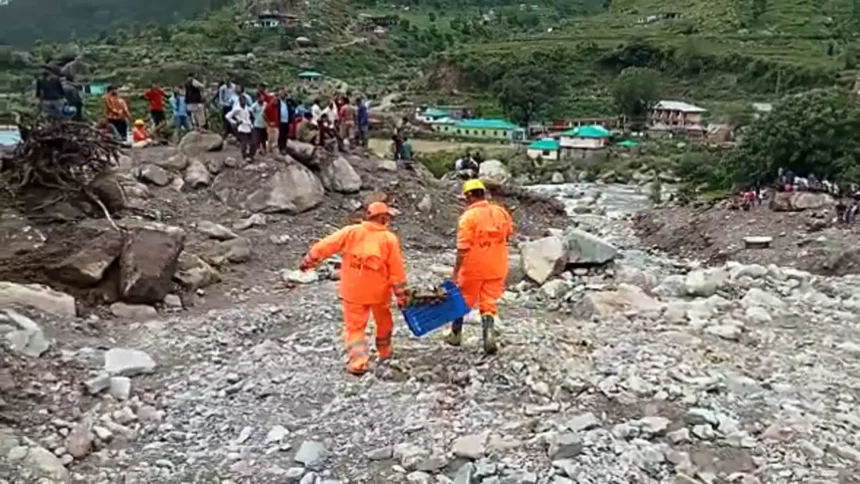In the aftermath of the devastating floods that struck Himachal Pradesh recently, the state police have launched a crucial initiative to identify the bodies being recovered from rivers and drains. Families of the missing individuals are anxiously awaiting news of their loved ones, and this effort brings hope to their search for closure.
Addressing the media on Friday, Himachal Pradesh’s Director General of Police (DGP), Sanjay Kundu, shed light on the grim situation. As the floodwaters receded, numerous deceased bodies were found floating along the swollen rivers and drains. Over time, some of these bodies washed up on the banks of the Sutlej and Beas rivers. In response to this tragic scenario, India Reserve Battalion (IRB) teams were deployed to keep a vigilant eye on the riverbanks.
The primary objective of the IRB teams is to take immediate possession of any recovered bodies and expedite the process of identification. To accomplish this, the police are resorting to DNA tests, a reliable and scientifically advanced method. With this strategy in place, authorities aim to bring closure to the grieving families and initiate appropriate actions based on the identified victims.
The floods in Himachal Pradesh have caused immense devastation, with many people still unaccounted for. The situation has left families desperately searching for any sign of their missing relatives. The DGP’s announcement of employing DNA tests demonstrates the police’s commitment to leaving no stone unturned in their efforts to identify the deceased and unite them with their families.
The use of DNA testing in disaster victim identification has proven effective in various other scenarios around the world. By matching DNA samples from the bodies to samples voluntarily provided by relatives of the missing persons, forensic experts can establish positive identifications with a high degree of accuracy. This process may be time-consuming, but it offers an essential means of providing closure and certainty in the face of overwhelming tragedy.
The recovery and identification process poses numerous challenges. The bodies, having been submerged in water for several days, may be in a deteriorated state, making traditional identification methods challenging or impossible. As a result, DNA testing emerges as a crucial tool in this complex and heart-wrenching task.
While the authorities continue their efforts to identify the deceased, the search and rescue operations for the missing persons persist. The floods have wreaked havoc on the state’s infrastructure and disrupted communication networks, further complicating the rescue efforts. Nevertheless, the rescue teams, along with local volunteers and government agencies, remain resolute in their determination to locate survivors and provide assistance to affected communities.
In times of disaster, the resilience and solidarity of communities come to the forefront. Many people across the state have come together to offer support, aid, and relief to those impacted by the floods. Non-governmental organizations, social groups, and volunteers have been working tirelessly to provide food, shelter, and medical care to those in need.
As the search for survivors and victims continues, the state government has also been coordinating with neighboring regions for additional resources and support. The Indian government, various state governments, and disaster response agencies have been collaborating to ensure that all available resources are deployed effectively in the affected areas.
The Himachal Pradesh police’s adoption of DNA testing to identify the bodies recovered from the floods is a significant step in providing closure to grieving families. The floods have caused immense pain and loss to the affected communities, and the identification process is critical in helping them find solace amidst the devastation. As rescue operations and relief efforts persist, the spirit of solidarity and resilience shines through, exemplifying the indomitable human spirit in the face of tragedy.









